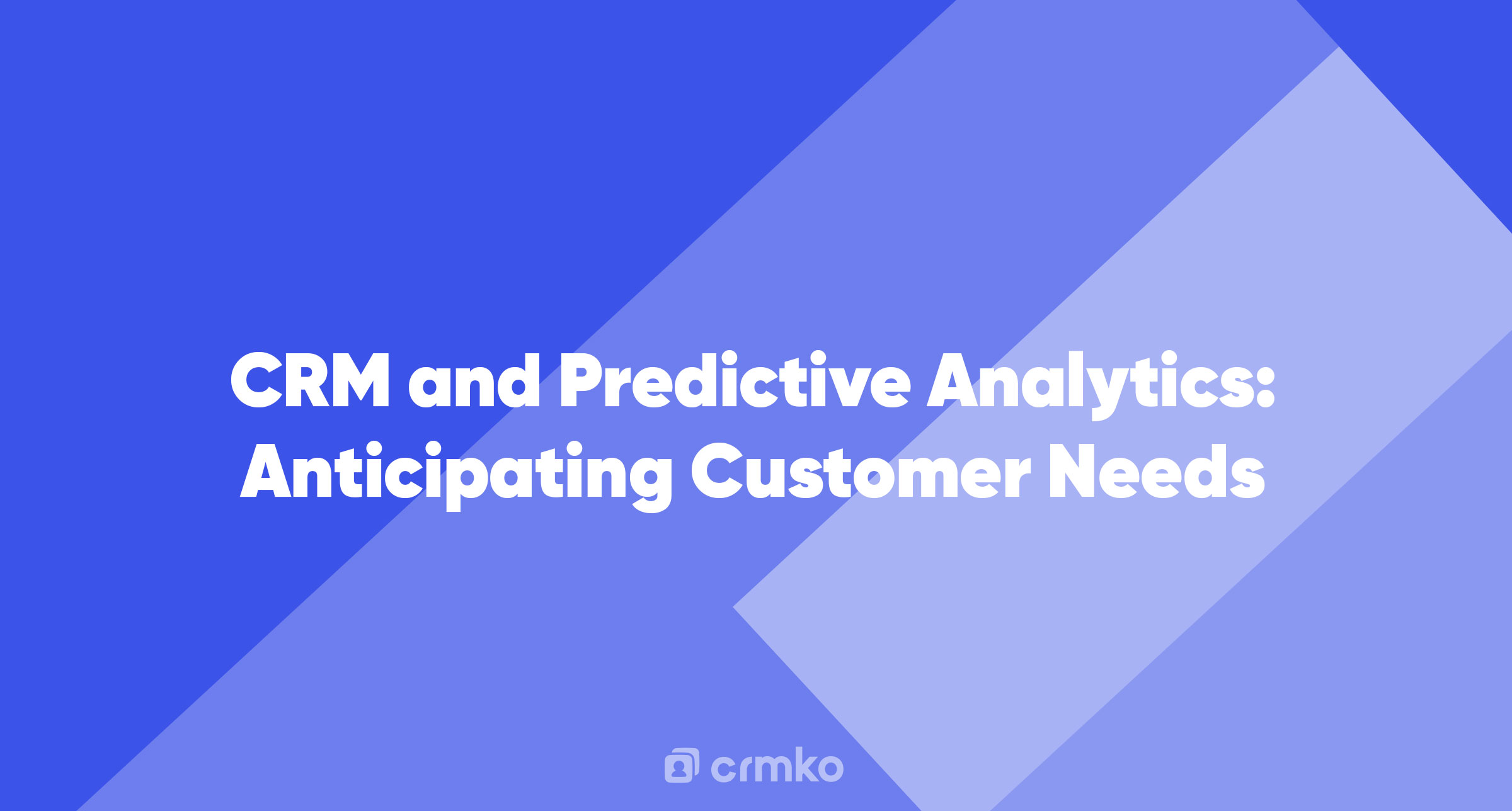Are you looking for a game-changing strategy to enhance your customer service management? Look no further than CRM and predictive analytics. By harnessing the power of data, algorithms, and machine learning, you can anticipate your customers' needs, preferences, and behaviors, enabling you to deliver personalized experiences that exceed their expectations. In this comprehensive guide, we will explore the concept of CRM and predictive analytics and how it can revolutionize your customer service management. Let's dive in!
What is Predictive Analytics?
Predictive analytics is an advanced form of analytics that leverages historical data, statistical modeling, data mining, and machine learning to forecast future outcomes. By analyzing large amounts of data from various sources, such as customer interactions and purchase history, predictive analytics can identify patterns and trends that help anticipate customer behavior. This powerful tool allows businesses to make data-driven decisions, optimize operations, and enhance the overall customer experience.
The Role of CRM in Customer Service Management
Customer Relationship Management (CRM) is the foundation of effective customer service management. It involves strategies, processes, and technologies that enable businesses to manage and analyze customer interactions and data. CRM platforms, such as Salesforce and HubSpot, provide a centralized repository for customer information, allowing businesses to track customer interactions, manage sales leads, and streamline communication.
The Power of Anticipating Customer Needs
Anticipating customer needs is the key to delivering exceptional customer service. By understanding what customers want before they even express it, businesses can proactively address their needs, personalize their experiences, and build lasting relationships. This is where the synergy between CRM and predictive analytics comes into play. By analyzing customer data and applying predictive models, businesses can gain insights into customer behavior, preferences, and purchase patterns, enabling them to anticipate and fulfill their needs.
1. Predictive Lead Scoring
One of the most valuable applications of predictive analytics in CRM is predictive lead scoring. Traditionally, lead scoring relied on manual methods and guesswork. However, with predictive analytics, businesses can use historical data to forecast which leads are most likely to convert. By analyzing factors such as demographics, purchase history, and online behavior, predictive lead scoring assigns a score to each lead, indicating their likelihood of becoming a customer. This enables sales teams to prioritize their efforts, focus on high-value leads, and optimize their sales process.
2. Personalized Product Targeting
Another powerful application of CRM and predictive analytics is personalized product targeting. By analyzing customer data, businesses can gain insights into individual preferences, purchase history, and browsing behavior. This information allows them to create personalized product recommendations and targeted marketing campaigns. For example, an e-commerce platform can use predictive analytics to suggest relevant products to customers based on their browsing history and past purchases. This personalized approach enhances the customer experience, increases conversion rates, and drives customer loyalty.
3. Enhancing the Customer Journey
Understanding the customer journey is essential for delivering exceptional customer service. By mapping the various touchpoints and interactions a customer has with a business, companies can identify pain points, improve processes, and optimize the overall customer experience. CRM and predictive analytics can provide valuable insights into the customer journey, allowing businesses to identify bottlenecks, tailor their interactions, and provide timely and relevant support. For example, by analyzing customer data, businesses can predict when a customer is likely to need assistance and proactively reach out to offer support or relevant information.
4. Proactive Issue Resolution
Predictive analytics can also help businesses proactively address customer issues before they escalate. By analyzing customer data, businesses can identify patterns and trends that indicate potential problems or dissatisfaction. For example, if multiple customers are experiencing similar issues with a product or service, predictive analytics can alert businesses to the problem, enabling them to take corrective actions before it affects more customers. This proactive approach demonstrates a commitment to customer satisfaction and can help prevent customer churn.
5. Optimize Resource Allocation
Efficient resource allocation is crucial for effective customer service management. By leveraging predictive analytics, businesses can optimize their resource allocation based on anticipated customer needs. For example, by analyzing historical data and customer trends, businesses can forecast periods of high demand and allocate resources accordingly. This ensures that the right resources, such as customer service representatives or inventory, are available when needed, minimizing wait times and enhancing the overall customer experience.
6. Tailored Communication and Engagement
Effective communication and engagement are key components of exceptional customer service. By leveraging CRM and predictive analytics, businesses can tailor their communication and engagement strategies to individual customer preferences. For example, by analyzing customer data, businesses can determine the most effective communication channels and times to engage with customers. This allows for personalized messaging, targeted offers, and timely support, increasing customer satisfaction and loyalty.
7. Continuous Improvement
CRM and predictive analytics provide businesses with valuable insights into customer behavior and preferences. By continuously analyzing and refining customer data, businesses can identify areas for improvement and implement strategies to enhance the customer experience. This iterative process allows businesses to stay ahead of changing customer needs, adapt their offerings, and consistently deliver exceptional customer service.
Conclusion
CRM and predictive analytics are powerful tools that can anticipate customer needs, optimize resource allocation, and enhance the overall customer experience. By leveraging data, algorithms, and machine learning, businesses can gain valuable insights into customer behavior, preferences, and purchase patterns. This enables businesses to deliver personalized experiences, proactively address issues, and build lasting customer relationships. By embracing CRM and predictive analytics, businesses can differentiate themselves in a competitive market and drive customer satisfaction, loyalty, and growth. So, are you ready to harness the power of CRM and predictive analytics to anticipate your customers' needs and elevate your customer service management? The future of exceptional customer service starts now.
